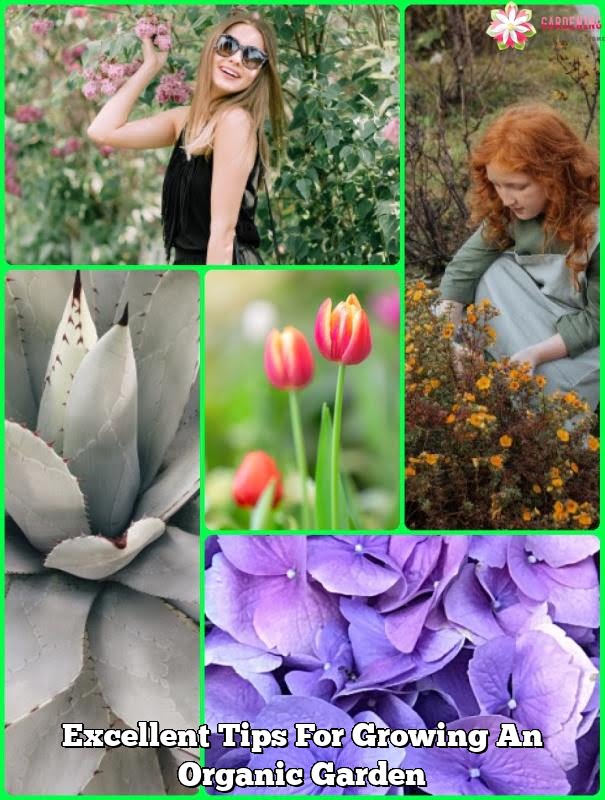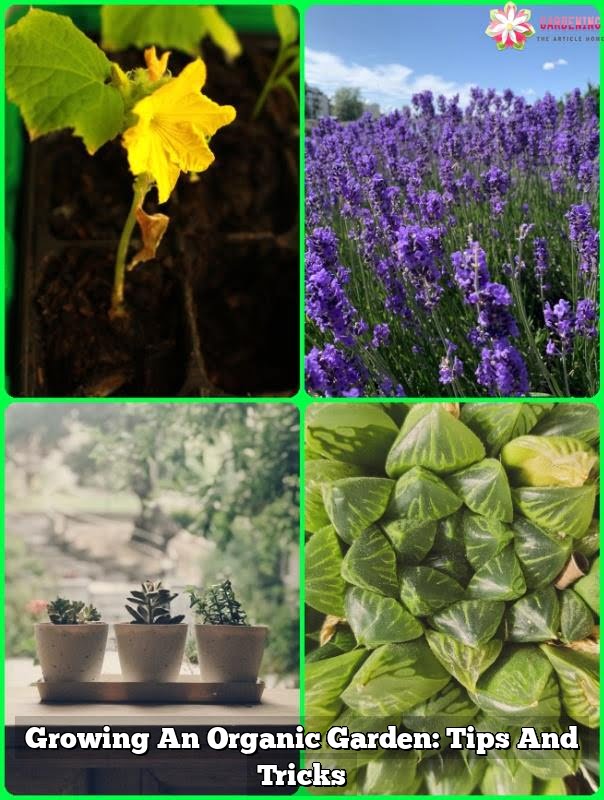Organic horticulture is a great way to grow your own food at home and relaxing activity in which anyone can participate. But, if you’re just getting started, they may feel overwhelmed. How should someone who does not have any experience of growing plants? Read this article, of course!
Having healthy soil in your garden is your plants avoid insect pests. Healthy and makes your garden more resistant to common diseases and insects. To give your garden the best chance of yielding the healthiest plants, make sure you begin with premium soil devoid of salt-accumulating chemicals.
Use climbing vines or plants to cover walls and walls. Many climbers are so robust that they can cover the wall or fence in as little as one growing season.They can also grow through existing shrubs or trees, or even cover an arbor. Some must be tied to supports, but some will need to be trained or supported with ties. Some climbers that have proven to be reliable are honeysuckle, jasmine, wisteria, clematis, and wisteria.
When the fall season arrives, it’s time to plant your autumn vegetables. A hollowed out pumpkin can be used as a festive container instead of clay pots. Once you cut an opening at the top of the pumpkin and scoop out the insides, spray the edges and inside with Wilt-Pruf to prevent rotting.
You could also repel your pet by planting rosemary or mothballs.
Don’t mow your grass too short!If you let your grass keep some height after mowing, the roots will go down deeper into the dirt, which will make for a stronger lawn and will have a higher resistance to drying out. Short grass means short roots and turning brown.
Most vegetables need that much sun in order to grow well and quickly. This is also rings true for some of the flowers.
Coffee Grounds
If a test indicates that your soil is very alkaline, mix some coffee grounds into it. The coffee grounds provide a very inexpensive way to add acid to the dirt. This will allow your vegetables and look more appealing.
Do you enjoy fresh mint leaves grow and take over your lovely garden but still like them? You can stunt the growth of mint by planting them in a garden container or super-sized bowl. You can plant the container into the soil if you want to, but the container will restrict the roots, and keep the plant from taking over your garden!
Know the perfect time to harvest each of the vegetables you plant. Each veggie has its own prime time frames for harvesting. For example, zucchini and baby peas have the best taste when you pick them early. On the contrary, tomatoes taste best when they are as ripe as possible from the vine.
Chamomile tea is a good remedy against fungus attacking plants.
Use common sense when you are watering the garden. A soaker hose can save valuable time by watering all of your plants simultaneously, and will save you a lot of time.Use a low water pressure to avoid damaging tender members of your garden.Let your soaker hose run for a few hours while as you do other things.
It is essential to keep your knees protected as you are gardening. Many people find it difficult to bend over and working in the garden for extended periods of time when standing up. Kneeling down on the ground is a good way to reach your plants without causing stress to your back. Use a pad so that your knees don’t get sore.
If you’re planning on gardening inside, evaluate the amount of natural light that is present. If you’re living in a home that doesn’t receive much sunlight, you might want to look into growing plants that thrive in lower-light environments. You can also consider using grow-lights for this exact purpose.
Plant Material
Your compost pile should contain green plants and dry plant materials.Green plant material consists of spent flowers, fruit waste, leaves, weeds, and leaves. Dried plant material comprises shredded paper, however, sawdust, used wood chips and straw. Avoid using ashes, meat, charcoal and diseased plants in your compost.
Think about what you can use while getting ready to garden. Try using organic alternatives to the typical chemical fertilizers. A good example to use compost.
If you are going to plant a shrub or a tree in your garden, you should pay close attention to the hole that you have dug. If the hole that you create for them has any “glazed” sides that were caused by a shovel, the root may be restricted from entering into the adjacent soil.
Use at least 3″ of organic material to mulch trees and trees. This will make the soil richer and also saves you reduce your water each month. You will find the mulch attractive.
Know what to look for when to buy plants to be added into your organic garden. This is especially true when buying annual or perennials. You need to be sure to get ones that are budded but not the ones that are blooming. This is so they can start growing a stronger root system in the garden.
A terrific way to obtain fertilizer for your plants in the garden is by creating compost of your own compost. An interesting way of making organic fertilizer is with a small worm bin for composting. Red worms, soil, kitchen scraps and newspaper shreds in a bin will get you started.
Snails can be sprayed away with a mixture of ammonia and water mixture. The ammonia won’t hurt the fragile plants, and it will later convert to beneficial nitrogen. It will kill off the snails and keep them from bringing harm to your flowers. Use the water and ammonia mixture daily for best results.
A gardener should carefully check to see that a plant is getting enough but not over or under watering your plants. Too much water rots the roots, and too little water will cause your plants to wilt and die. Check the moisture level of your soil is regularly.
After reading this article, you should have a better idea of the appeal of growing an organic garden. It is very relaxing and fun to work in a beautiful garden. Using these tips, you can become an excellent organic gardener.

Welcome to my blog about home and family. This blog is a place where I will share my thoughts, ideas, and experiences related to these important topics. I am a stay-at-home mom with two young children. I hope you enjoy reading it! and may find some helpful tips and ideas that will make your home and family life even better!





